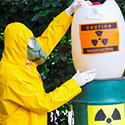


About Us
Our company grew exponentially over the past 20 years, establishing itself as a leading and only company in South Africa that has the capability to permanently remove halogenated organic waste, an environmentally-friendly alternative to the conventional methods of encapsulation or exportation abroad.
Contact Us
- 011 316-1800 / 011 316-4999
- sales@athermal.co.za
- 28 Keramiek Street, Clayville; Olifantsfontein South Africa


